What are bed bugs?
Bed bugs (Cimex lectularius) are small, flat, parasitic insects that feed solely on the blood of people and animals while they sleep. Bed bugs are reddish-brown in color, wingless, range from 1mm to 7mm (roughly the size of Lincoln’s head on a penny), and can live several months without a blood meal.
Where are bed bugs found?
Bed bugs are found across the globe from North and South America, to Africa, Asia and Europe. Although the presence of bed bugs has traditionally been seen as a problem in developing countries, it has recently been spreading rapidly in parts of the United States, Canada, the United Kingdom, and other parts of Europe. Bed bugs have been found in five-star hotels and resorts and their presence is not determined by the cleanliness of the living conditions where they are found.
Bed bug infestations usually occur around or near the areas where people sleep. These areas include apartments, shelters, rooming houses, hotels, cruise ships, buses, trains, and dorm rooms. They hide during the day in places such as seams of mattresses, box springs, bed frames, headboards, dresser tables, inside cracks or crevices, behind wallpaper, or any other clutter or objects around a bed. Bed bugs have been shown to be able to travel over 100 feet in a night but tend to live within 8 feet of where people sleep.
Do bed bugs spread disease?
Bed bugs are not known to spread disease. Bed bugs can be an annoyance because their presence may cause itching and loss of sleep. Sometimes the itching can lead to excessive scratching that can sometimes increase the chance of a secondary skin infection.
What health risks do bed bugs pose?
A bed bug bite affects each person differently. Bite responses can range from an absence of any physical signs of the bite, to a small bite mark, to a serious allergic reaction. Bed bugs are not considered to be dangerous; however, an allergic reaction to several bites may need medical attention.
What are the signs and symptoms of a bed bug infestation?
One of the easiest ways to identify a bed bug infestation is by the tell-tale bite marks on the face, neck, arms, hands, or any other body parts while sleeping. However, these bite marks may take as long as 14 days to develop in some people so it is important to look for other clues when determining if bed bugs have infested an area. These signs include:
- the bed bugs’ exoskeletons after molting,
- bed bugs in the fold of mattresses and sheets,rusty–colored blood spots due to their blood-filled fecal material that they excrete on the mattress or nearby furniture, and
- a sweet musty odor.
How do I know if I’ve been bitten by a bed bug?
It is hard to tell if you’ve been bitten by a bed bug unless you find bed bugs or signs of infestation. When bed bugs bite, they inject an anesthetic and an anticoagulant that prevents a person from realizing they are being bitten. Most people do not realize they have been bitten until bite marks appear anywhere from one to several days after the initial bite. The bite marks are similar to that of a mosquito or a flea — a slightly swollen and red area that may itch and be irritating. The bite marks may be random or appear in a straight line. Other symptoms of bed bug bites include insomnia, anxiety, and skin problems that arise from profuse scratching of the bites.
Because bed bug bites affect everyone differently, some people may have no reaction and will not develop bite marks or any other visible signs of being bitten. Other people may be allergic to the bed bugs and can react adversely to the bites. These allergic symptoms can include enlarged bite marks, painful swellings at the bite site, and, on rare occasions, anaphylaxis.
How did I get bed bugs?
Bed bugs are experts at hiding. Their slim flat bodies allow them to fit into the smallest of spaces and stay there for long periods of time, even without a blood meal. Bed bugs are usually transported from place to place as people travel. The bed bugs travel in the seams and folds of luggage, overnight bags, folded clothes, bedding, furniture, and anywhere else where they can hide. Most people do not realize they are transporting stow-away bed bugs as they travel from location to location, infecting areas as they travel.
Who is at risk for getting bed bugs?
Everyone is at risk for getting bed bugs when visiting an infected area. However, anyone who travels frequently and shares living and sleeping quarters where other people have previously slept has a higher risk of being bitten and or spreading a bed bug infestation.
How are bed bugs treated and prevented?
Bed bug bites usually do not pose a serious medical threat. The best way to treat a bite is to avoid scratching the area and apply antiseptic creams or lotions and take an antihistamine. Bed bug infestations are commonly treated by insecticide spraying. If you suspect that you have an infestation, contact your landlord or professional pest control company that is experienced with treating bed bugs. The best way to prevent bed bugs is regular inspection for the signs of an infestation.

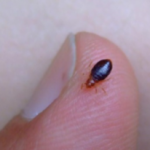
 insecticides. If you’re dealing with a resistant population, some products and application methods may only serve to make the problem worse. It is a good idea to consult a qualified pest management professional if you have bed bugs in your home.
insecticides. If you’re dealing with a resistant population, some products and application methods may only serve to make the problem worse. It is a good idea to consult a qualified pest management professional if you have bed bugs in your home.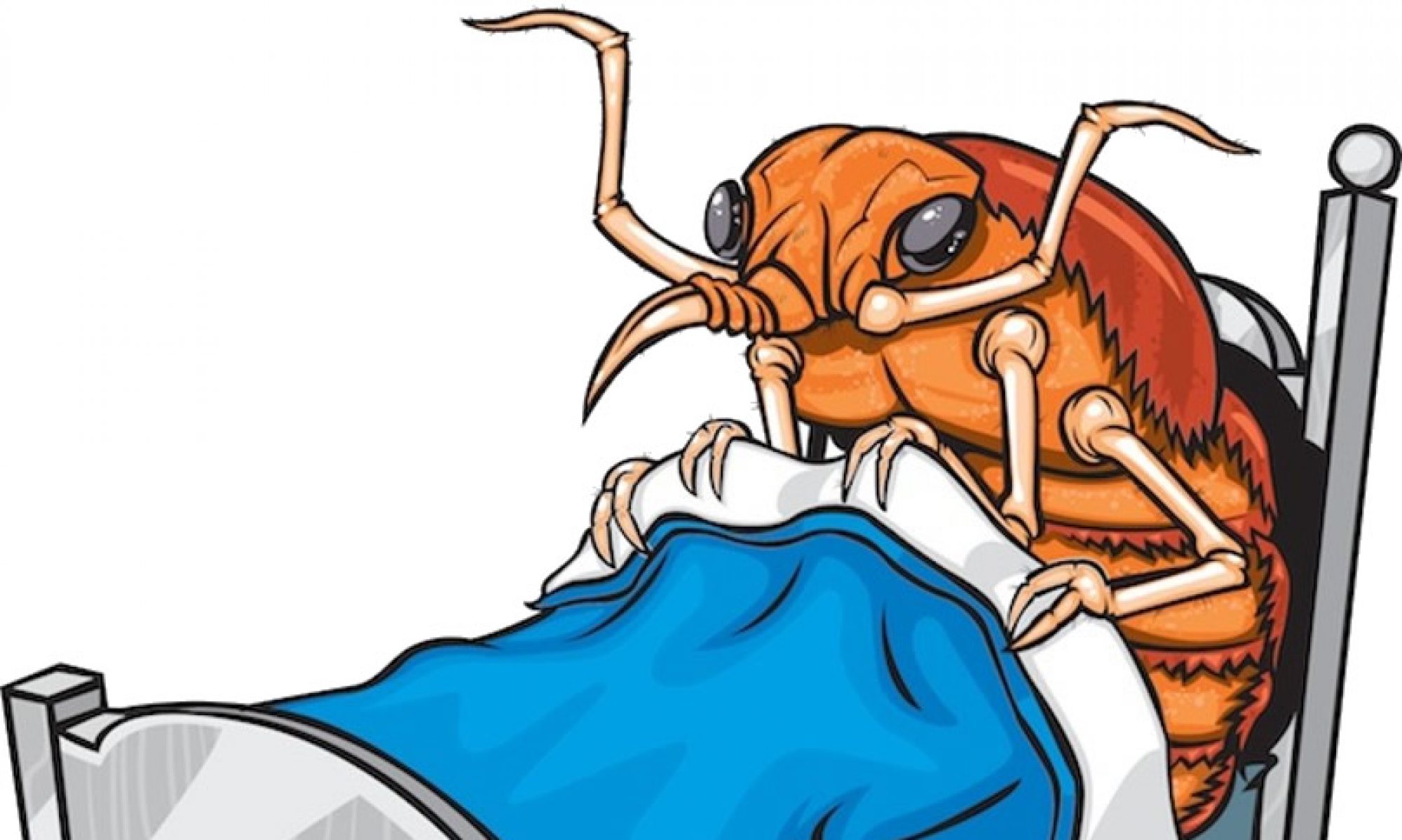


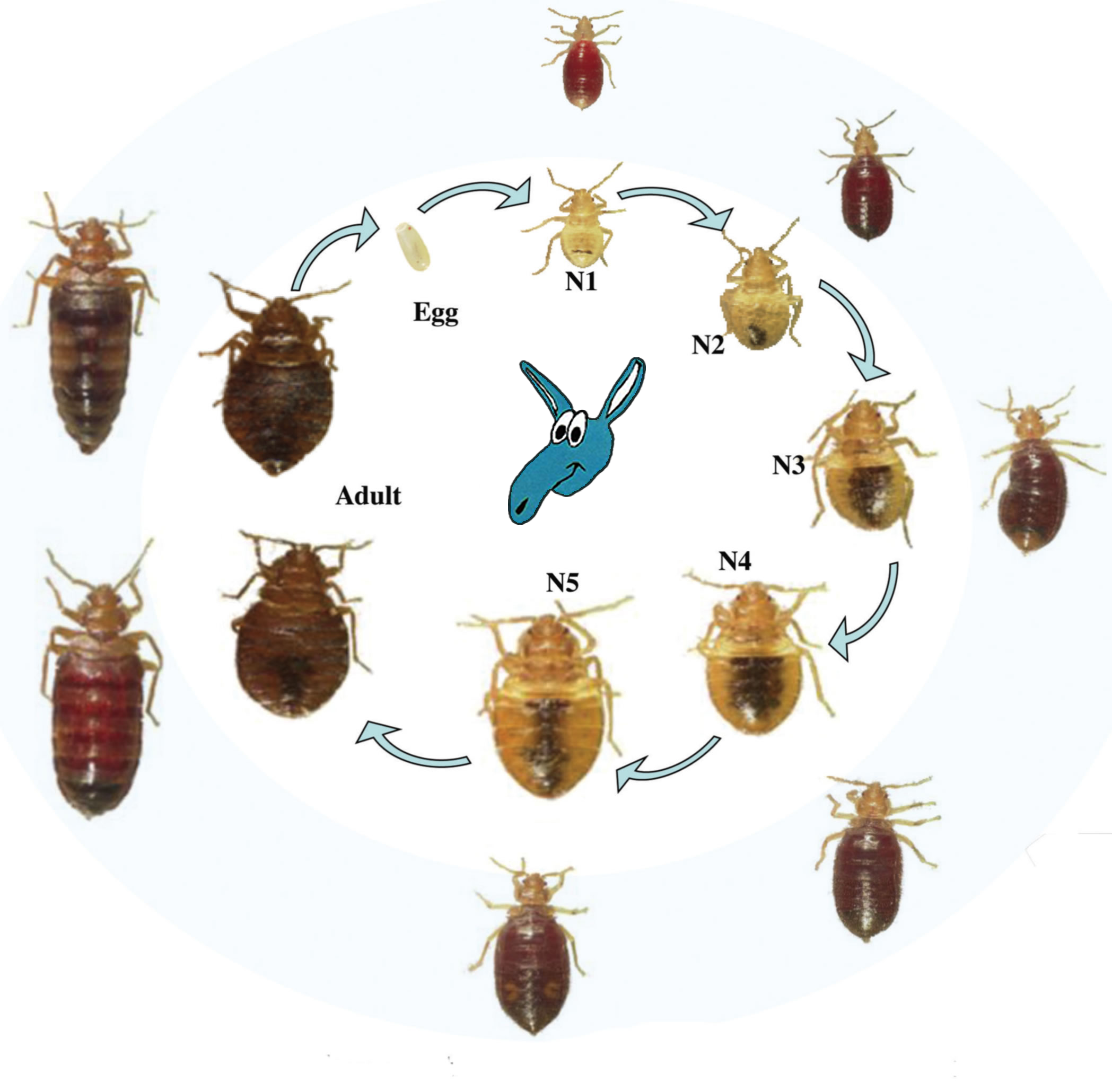
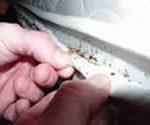 Disposal of beds, furniture, clothing, and other items because they are infested with bed bugs should generally be discouraged in residential situations and should be evaluated on a case-by-case basis.
Disposal of beds, furniture, clothing, and other items because they are infested with bed bugs should generally be discouraged in residential situations and should be evaluated on a case-by-case basis.
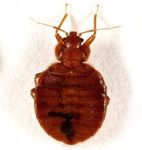 Bed bugs are reddish-brown, small–about ¼” long-wingless and very flat. They prefer to feed on human blood, although they may bite other warm-blooded animals, including pets. During the day, bedbugs hide near the bed. They use heat-seeking thermo receptors to find their sleeping victims at night.
Bed bugs are reddish-brown, small–about ¼” long-wingless and very flat. They prefer to feed on human blood, although they may bite other warm-blooded animals, including pets. During the day, bedbugs hide near the bed. They use heat-seeking thermo receptors to find their sleeping victims at night.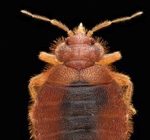 Bat bugs:
Bat bugs: 
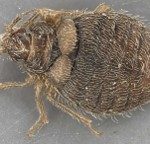 Swallow bugs are found commonly in barn and cliff swallow nests, but readily invade the structures and bite humans as well. They are not incriminated as vectors of any diseases to humans, but their bite is known to cause minor to serious reactions on humans. The swallow bug is distinguished from other, similar species by its antennae, where the last two segments are the same length. This species also tends to be a grayish brown color, rather than the reddish brown of the Human Bed Bug.
Swallow bugs are found commonly in barn and cliff swallow nests, but readily invade the structures and bite humans as well. They are not incriminated as vectors of any diseases to humans, but their bite is known to cause minor to serious reactions on humans. The swallow bug is distinguished from other, similar species by its antennae, where the last two segments are the same length. This species also tends to be a grayish brown color, rather than the reddish brown of the Human Bed Bug.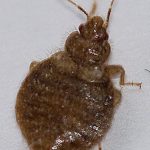 numbers, are used to provide hatching eggs for broiler production. Several regions of the broiler breeder facility may serve as shelter and hiding places for bed bugs. Typically, feeders and waterers are hung over platforms made of wooden slats that provide excellent shelter for bed bugs. Also, the corners of galvanized metal nest boxes and cardboard boxes used to transport eggs are typical sites for bed bugs. Because of the high density of animals and the resulting stress, heavy infestations of bed bugs in chicken houses may lead to excessive feather loss, cloacal irritation, lesions on the breast and legs, and even anemia in extreme cases. Consequently, production may be decreased, feed consumption may increase, and egg spots from bed bug fecal deposits may be observed, potentially diminishing the value of the eggs as well as the profitability of the chickens.
numbers, are used to provide hatching eggs for broiler production. Several regions of the broiler breeder facility may serve as shelter and hiding places for bed bugs. Typically, feeders and waterers are hung over platforms made of wooden slats that provide excellent shelter for bed bugs. Also, the corners of galvanized metal nest boxes and cardboard boxes used to transport eggs are typical sites for bed bugs. Because of the high density of animals and the resulting stress, heavy infestations of bed bugs in chicken houses may lead to excessive feather loss, cloacal irritation, lesions on the breast and legs, and even anemia in extreme cases. Consequently, production may be decreased, feed consumption may increase, and egg spots from bed bug fecal deposits may be observed, potentially diminishing the value of the eggs as well as the profitability of the chickens.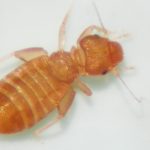 Psocids (Book Lice)
Psocids (Book Lice)  in 1940: thoroughness; Dr. Potter’s footnotes cite the following words of wisdom, from a 1940 pest control manual:
in 1940: thoroughness; Dr. Potter’s footnotes cite the following words of wisdom, from a 1940 pest control manual: During the war years, bed bugs were transported on bedding into many public air-raid shelters. They also feasted on sleeping soldiers in barracks and battlefront trenches, and were spread on belts, backpacks, canteens and helmets. One interesting account from World War I states, “In the East African campaign the bugs invaded the cork lining of the sun helmets of the soldiers. As the helmets were piled together at night, all soon became infested and the soldiers complained of bugs attacking their heads.”
During the war years, bed bugs were transported on bedding into many public air-raid shelters. They also feasted on sleeping soldiers in barracks and battlefront trenches, and were spread on belts, backpacks, canteens and helmets. One interesting account from World War I states, “In the East African campaign the bugs invaded the cork lining of the sun helmets of the soldiers. As the helmets were piled together at night, all soon became infested and the soldiers complained of bugs attacking their heads.” foretelling big concerns for moving and storage companies today.
foretelling big concerns for moving and storage companies today. As noted earlier, bed bugs became plentiful in North America with the coming of European settlers. As a deterrent, beds were often made from sassafras wood and the crevices doused with boiling water, arsenic and sulfur.
As noted earlier, bed bugs became plentiful in North America with the coming of European settlers. As a deterrent, beds were often made from sassafras wood and the crevices doused with boiling water, arsenic and sulfur.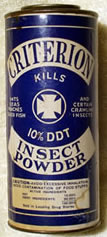 Others relied on pyrethrum powder: “Dusted between the sheets of a bed, it will protect the sleeper from the most voracious hotel bug.
Others relied on pyrethrum powder: “Dusted between the sheets of a bed, it will protect the sleeper from the most voracious hotel bug.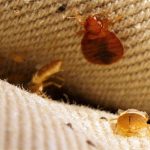
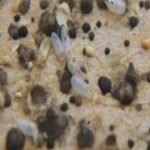
 a portion of the undigested blood on the areas where it crawls. Another event that occurs is that as they are feeding the individual will move around in the bed and squeeze the bed bug between their body and the bedding.
a portion of the undigested blood on the areas where it crawls. Another event that occurs is that as they are feeding the individual will move around in the bed and squeeze the bed bug between their body and the bedding.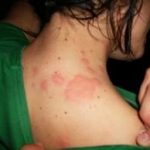 tube it injects its saliva, which contains anticoagulants and anesthetics, while with the other it withdraws the blood of its host. After feeding for about five minutes, the bug returns to its hiding place.
tube it injects its saliva, which contains anticoagulants and anesthetics, while with the other it withdraws the blood of its host. After feeding for about five minutes, the bug returns to its hiding place.